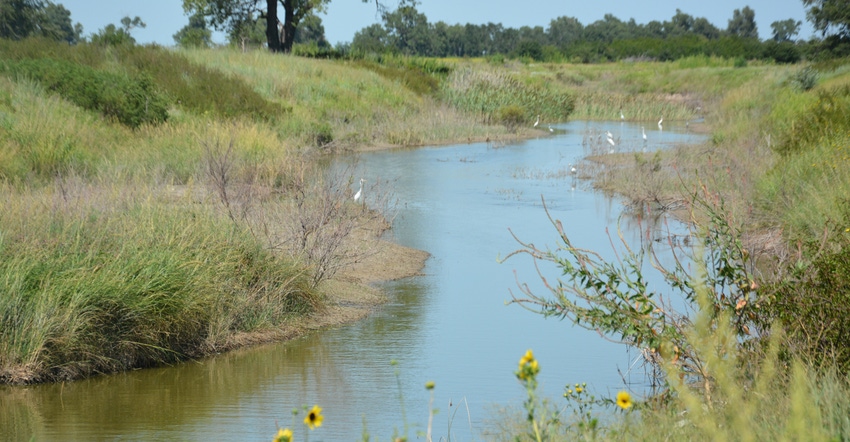January 14, 2021

As a dry La Niña winter continues across Kansas, the spotlight has again turned to water issues in arid Kansas.
Despite a heavy, wet snowstorm in early January, Kansas is dry. And the water watchers in Topeka have taken note of this, putting some of the thornier water issues back in the spotlight to become dominant topics of discussion by the end of this year.
The Kansas Water Office is already considering updates, including the Locally Enhanced Management District in northwest Kansas’ Groundwater Management District 4. Landowners are beginning another district-wide LEMA in GMD 1.
So far, there’s a hold on the most acrimonious issue in Kansas: the impairment action filed by the U.S. Fish and Wildlife Service on behalf of Quivira National Wildlife Refuge. The service has already indicated that it will not seek additional water in 2021 after local mitigation efforts have been instituted.
But that announcement comes as a scary possibility of a summer drought following a dry year in much of Kansas last year and a dry winter looming in central Kansas. There is no assurance that the combination of reduced rainfall and stepped-up irrigation because of a dry growing season will not result in another shortfall of water into the refuge by the fall migration season.
Wildlife advocacy groups are already sounding an alarm and it may find a much friendlier audience in Washington than has been there for the past four years. Kansas farmers, especially those in water-short areas, will need to be alert to the challenges that a dry growing season will bring, not only to their operations this summer but to their future rights to water supplies.
It is important for Kansas farmers and rural municipalities to remind state and federal officials that this state has been at the forefront of water use monitoring and efforts to balance needs from rural and urban users. And I stipulate it is equally important to remind lawmakers that we are allowing trillions of cubic feet of fresh water to be lost every year when floods send it gushing down the swollen Missouri-Mississippi complex and into the saltwater of the Gulf of Mexico and beyond.
As we address water issues, let us not forget that there are both surface water and groundwater issues. We have been heavily focused on groundwater and we have made progress.
But, let’s remember: Rattlesnake Creek is surface water. So is the Mississippi River. So is the Missouri River. There will be an opportunity for a national conversation on how to deal with the threat of flooding and the threat of groundwater depletion. Let’s make sure that the people in power look at both of them. Our river systems are in trouble because we haven’t addressed any needs for management for half a century. We have made huge progress on managing groundwater. Yes, we need to continue that progress. But it’s time, past time, to take a hard look at our river basins and good management to capture and store fresh water.
I’ve said it before and I’ll say it again: We don’t need more water in the ocean. But we sure as heck need to store more fresh water in Kansas.
You May Also Like




